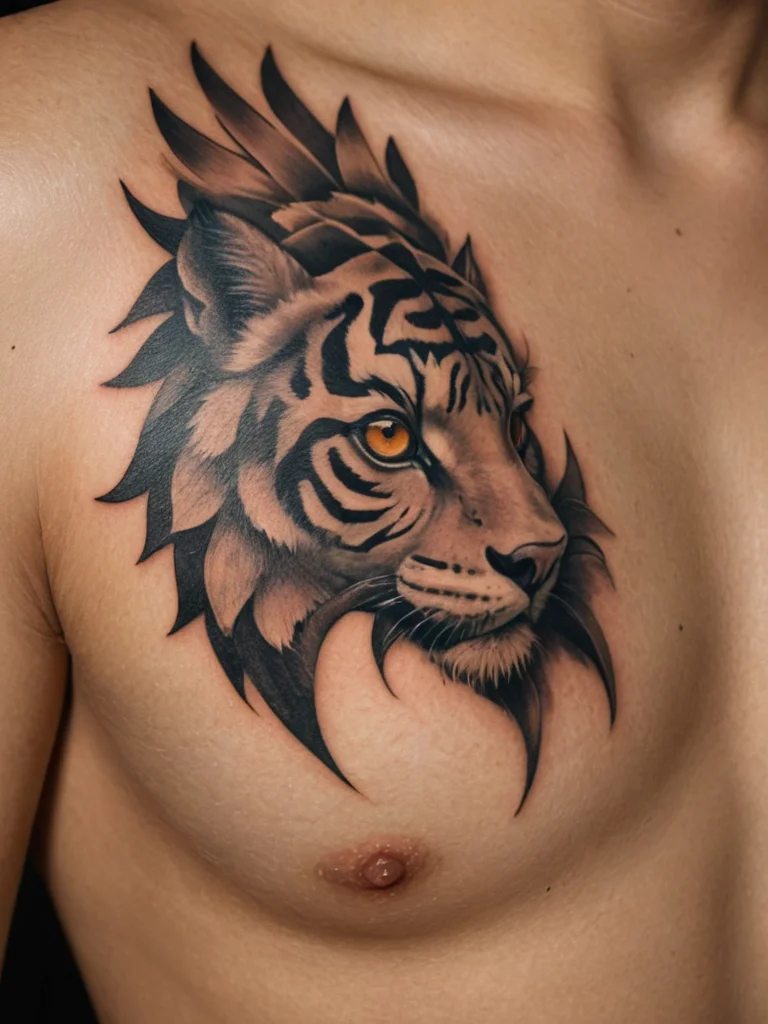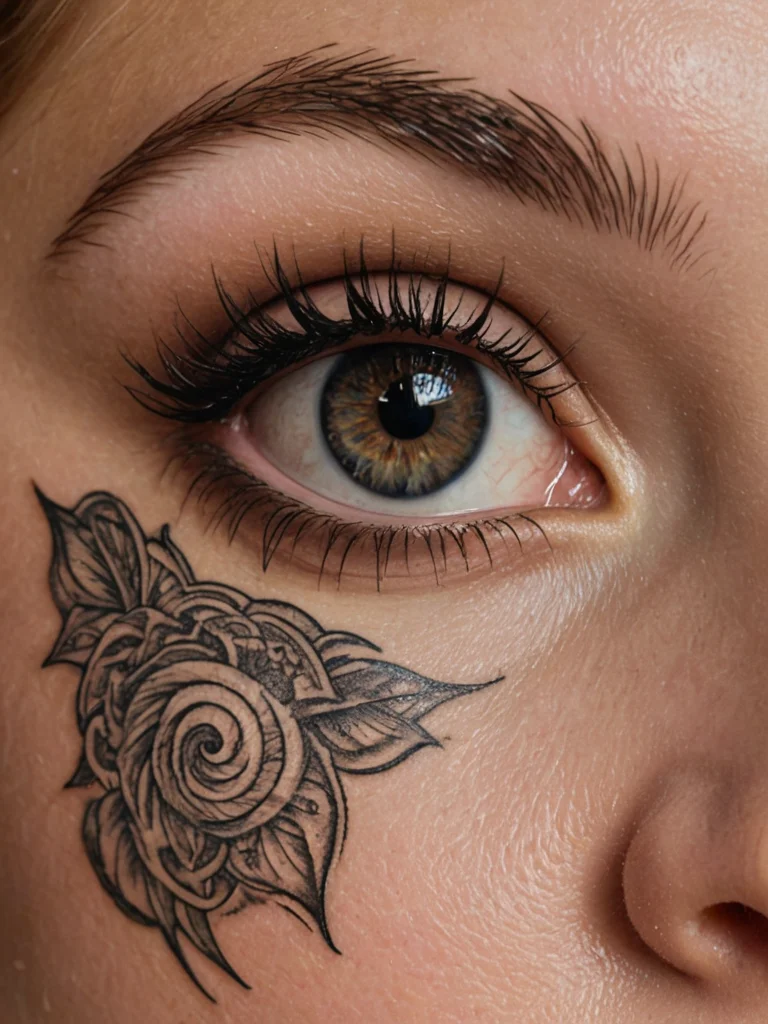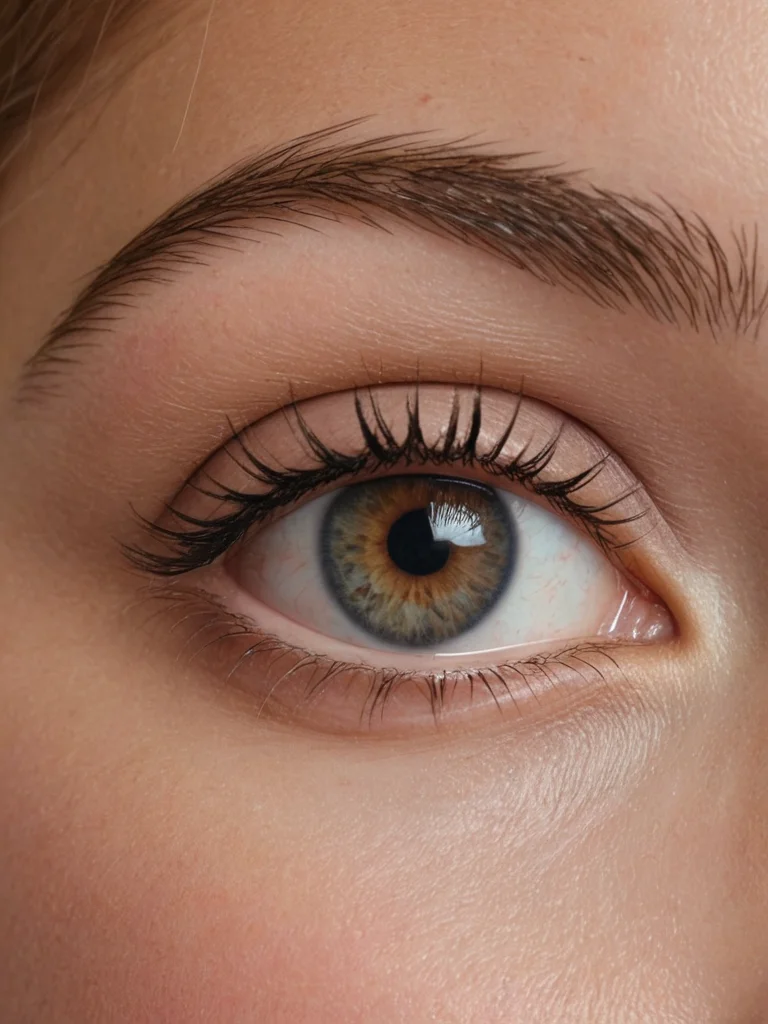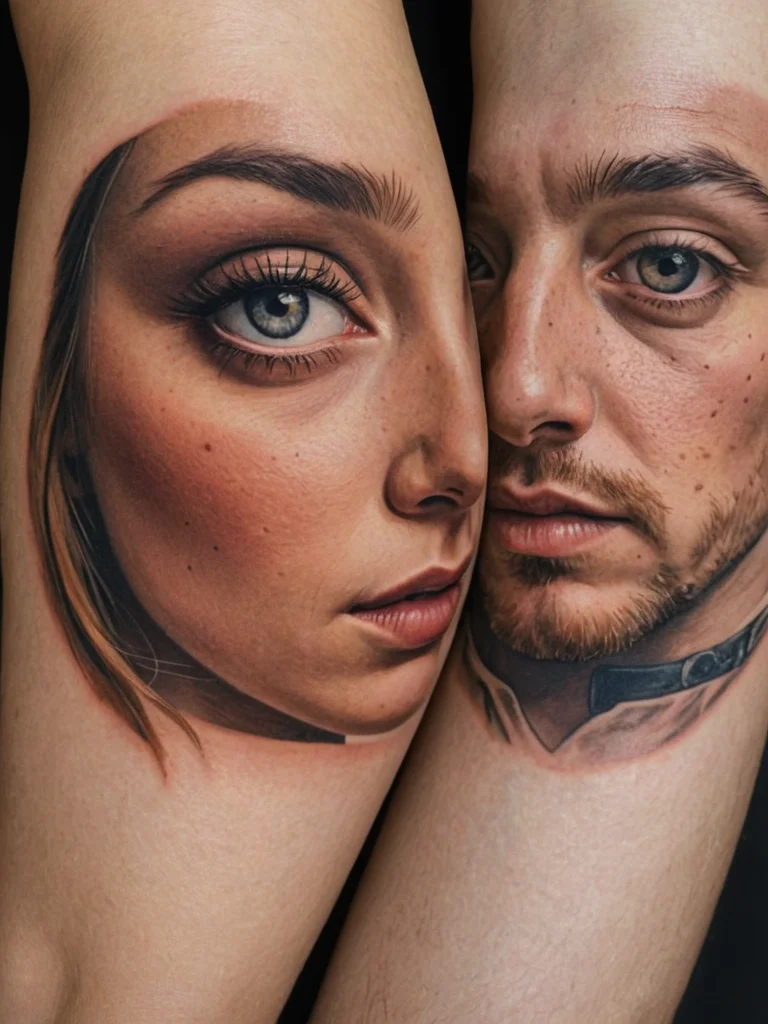As the world of tattoo art continues to evolve, pushing boundaries and redefining what’s possible on skin, two styles often come up in conversation: realism and hyperrealism. While both aim to capture the essence of something real – a person, an object, a scene – there are subtle yet significant distinctions that set them apart. Understanding these differences is crucial, whether you’re a seasoned collector looking for your next intricate piece or a newcomer curious about the pinnacle of tattoo artistry. This guide delves into the nuances, helping you appreciate the skill involved and make informed decisions for your own body art journey.
What’s the real difference? defining realism vs. hyperrealism tattoos

At its core, realism in tattooing is about faithfully recreating a subject as it appears in reality. The goal is to achieve a likeness, to capture the natural textures, forms, and proportions of the original. A realism tattoo might depict a portrait that looks strikingly like the person it represents, an animal with lifelike fur and eyes, or a landscape that mirrors a photograph. Tattoo artists specializing in realism focus on precise linework, accurate shading, and a natural color palette to create a believable illusion. The emphasis is on accuracy and representation, making the tattoo look as though it could be a photograph or a detailed drawing. Think of a portrait where the skin tones are rendered perfectly, the eyes have a lifelike sparkle, and the subtle wrinkles or textures are all present. It’s about bringing the subject to life on the skin, not to exceed reality, but to match it.
Hyperrealism, on the other hand, takes this pursuit of accuracy a step further. It’s not just about replicating reality; it’s about amplifying it, often to an almost surreal or exaggerated degree. Hyperrealism tattoos often incorporate elements that go beyond what the naked eye might typically perceive or what a standard photograph could capture. This can involve an intense focus on detail, an extreme play with light and shadow to create a dramatic, almost three-dimensional effect, or the use of exaggerated textures and contrasts. The aim is to create an image so detailed and impactful that it feels like it’s leaping off the skin, often with a heightened sense of depth, glossiness, or texture. For instance, a hyperrealist tattoo might render water droplets with such clarity and reflection that they appear to be actually wet, or depict fabrics with a sheen so pronounced it feels tangible. It often involves a mastery of subtle gradients, extreme highlights, and a sophisticated understanding of how light interacts with surfaces, pushing the perceived reality to its absolute limit and beyond.
The fundamental difference lies in the intent and the final output. Realism aims to be a true reflection of what exists. Hyperrealism aims to be a heightened, often more dramatic or visually arresting interpretation of reality, emphasizing detail and effect to an almost unbelievable degree. While a realism tattoo might make you say, “That looks exactly like the photo,” a hyperrealism tattoo might elicit, “That looks *more* real than real,” or “How is that even possible on skin?” Both require immense technical skill, but hyperrealism pushes the envelope of perception and detail even further.
Beyond the sketch: identifying key visual cues of each style

Distinguishing between realism and hyperrealism in practice often comes down to observing specific visual cues in the tattoo itself. These elements, while sometimes subtle, reveal the artist’s approach and the style’s inherent characteristics. When you look at a realism tattoo, you’ll notice a consistent level of detail throughout the piece. The shading is smooth and follows the natural contours of the subject, creating a sense of volume and form that is grounded in observation. Colors are typically true to life, mimicking the natural hues of skin, hair, eyes, or the material depicted. Highlights are present but usually soft, adding a touch of light rather than a blinding gleam. The overall impression is one of naturalness and accuracy; it’s a faithful copy. For example, a realistic portrait might feature soft skin textures, gentle highlights in the eyes, and subtle shifts in tone that mimic natural light. A realistic animal might have fur that looks soft and dense, with shading that defines muscle structure realistically.
Hyperrealism tattoos, conversely, often exhibit an amplified level of detail and a more dramatic use of light and shadow. You might see incredibly sharp, crisp highlights, often referred to as “specular highlights,” which give surfaces a glossy, wet, or metallic appearance. These highlights are not just subtle reflections; they are often intensely bright, giving the impression of a powerful light source. The depth of field can also be exaggerated, with foreground elements appearing incredibly sharp and distinct, while backgrounds might fade into a soft, painterly blur, mimicking a shallow depth of field often seen in professional photography or cinematic shots. Textures in hyperrealism are often rendered with an almost microscopic precision; think of the individual strands of hair, the pores of the skin, or the intricate patterns on fabric being depicted with astonishing clarity. The color saturation might also be slightly enhanced, or the contrast pushed, to make the image pop and feel more vibrant than its real-life counterpart. Consider a hyperrealistic depiction of a rose: the dewdrops on the petals might glisten with intense, sharp highlights, the velvety texture of the petals rendered with such fine detail that you can almost feel its softness, and the shadows beneath the leaves might be deeper and more dramatic than in natural light, giving the flower an almost sculptural quality.
Another key differentiator is the treatment of edges and transitions. In realism, edges are generally soft and blended, mirroring how we perceive objects in the real world without conscious effort to isolate details. Hyperrealism, however, might employ sharper edges in certain areas to emphasize specific details or create a more graphic impact, even while other areas are rendered with incredibly soft, smooth gradients. This controlled contrast between sharp and soft, bright and dark, is a hallmark of the hyperrealist approach. It’s about playing with perception, using the tattoo medium to create an illusion that is not just accurate, but captivatingly intense. For instance, a hyperrealist portrait might have eyes that possess an almost supernatural clarity and depth, with reflections that are so precise they appear almost crystalline, making the gaze feel incredibly direct and powerful.
When to choose which: matching style to your tattoo vision

Deciding between realism and hyperrealism for your next tattoo is a decision that should align with your personal aesthetic and the message you wish to convey. Realism is an excellent choice if your primary goal is to create a faithful representation of something meaningful to you. Perhaps you want a portrait of a loved one that captures their likeness perfectly, a beloved pet rendered with lifelike accuracy, or a landscape that transports you back to a cherished memory. Realism offers a grounded, authentic connection to the subject matter. It’s about celebrating the beauty and complexity of the real world as it is, bringing familiar elements to life on your skin in a way that feels intimate and true. If you appreciate subtlety, natural beauty, and a sense of genuine connection to the image, realism is likely the path for you. It allows the subject itself to speak, enhanced by the artist’s skill in faithful reproduction.
Hyperrealism, on the other hand, is ideal if you’re looking for a tattoo that commands attention and delivers a powerful visual impact. This style excels when you want to emphasize certain qualities of the subject, create a dramatic effect, or achieve a level of detail that feels almost unbelievable. If you admire the dramatic interplay of light and shadow, the exaggerated textures, and the almost photographic clarity that can be achieved, hyperrealism might be your preferred route. It’s perfect for pieces where you want to evoke a strong emotional response through heightened visual drama. For example, you might opt for hyperrealism if you want a portrait that feels intensely alive, almost as if the person is looking directly at you with an amplified presence, or a still life with objects rendered with such exquisite detail and texture that they seem to possess a tangible quality beyond ordinary sight. It’s for those who appreciate the art of illusion and the captivating power of enhanced reality.
Consider the placement and size of your tattoo as well. Both styles require a significant amount of detail and skill, meaning they often translate best onto larger canvases like the back, thigh, or full sleeve. Smaller areas can be challenging for hyperrealism to shine, as the extreme detail might become muddled. However, a skilled artist can adapt realism to a wider range of sizes. Think about the longevity of the design. While both styles are intricate, hyperrealism’s extreme details might blur over many years more than a well-executed realism piece. Discuss this with your artist; their expertise will be invaluable in ensuring your chosen style ages gracefully on your skin. Ultimately, the best style is the one that resonates most deeply with your vision and allows the artist to showcase their specific talents to create a piece that you will cherish for a lifetime.
Finding the masters: how to spot a skilled realism or hyperrealism artist

When seeking an artist skilled in realism or hyperrealism, the most crucial step is thorough research. Start by exploring their portfolio, which is typically available on their social media pages, personal websites, or the tattoo studio’s online presence. Look for consistency across their work. Do they consistently produce clean lines, smooth shading, and accurate proportions? For realism, pay close attention to how they render skin tones, textures like hair and fabric, and the eyes. The eyes, in particular, are often considered the window to the soul and a key indicator of an artist’s ability to capture life-like detail; they should have depth, light, and a sense of presence. A good realism artist will have a portfolio filled with diverse subjects—portraits, animals, objects—all rendered with the same level of accuracy and attention to detail.
For hyperrealism, you’ll want to see evidence of those amplified visual cues we discussed. Look for tattoos with striking highlights that make surfaces appear glossy or metallic, dramatic contrasts between light and shadow, and an almost photographic level of detail in textures. Does the artist excel at creating a convincing illusion of depth, perhaps with elements that seem to pop out from the skin? Examine their use of color saturation and blending; hyperrealists often have a masterful control over subtle color transitions and vibrant, yet natural-looking, hues. It’s also beneficial to look for artists who specialize in either color or black and grey, as these are distinct skill sets within the realism spectrum, and mastery in one doesn’t automatically translate to mastery in the other. A true hyperrealist artist will likely have a portfolio that clearly demonstrates their ability to push the boundaries of what’s typically seen in tattooing.
Beyond the visual evidence in their portfolio, consider the artist’s reputation and communication. Read reviews from previous clients, and don’t hesitate to reach out to the artist or studio directly. A skilled artist in these detailed styles should be able to articulate their process, discuss your ideas thoroughly, and provide realistic expectations regarding the time, cost, and healing process. They should be passionate about their craft and able to offer insights into how your chosen subject will best translate into either realism or hyperrealism. Many artists who excel in these styles are often booked far in advance, which is a good sign of demand and quality. Be patient, as securing an appointment with a master of realism or hyperrealism is an investment in a piece of art that will last a lifetime.
Realism vs. hyperrealism: your ultimate tattoo style guide summary

In summary, both realism and hyperrealism tattoos strive to replicate the appearance of the real world, but they diverge in their intensity and artistic intent. Realism focuses on faithful, accurate representation, aiming to capture the essence and visual characteristics of a subject as it naturally exists. It’s about creating a lifelike depiction that feels grounded and true to source material, emphasizing natural textures, colors, and proportions. Think of it as a photographic translation onto skin, where the goal is precise likeness.
Hyperrealism elevates this pursuit by pushing beyond mere replication. It involves amplifying details, exaggerating light and shadow, and enhancing textures to create an image that is not just real, but often *more* real, or dramatically impactful, than life itself. This style often incorporates extreme highlights, deep contrasts, and an almost microscopic level of detail to produce a visually arresting illusion that leaps off the skin. It’s about creating an intensified, captivating, and often surreal version of reality.
When choosing between them, consider your personal aesthetic and desired impact. Realism is perfect for those who appreciate natural beauty and seek an authentic, faithful depiction. Hyperrealism appeals to those who desire a bold, high-impact piece that plays with perception and delivers an extraordinary level of detail and drama. Both styles demand exceptional technical skill, patience, and a keen artistic eye. Finding an artist whose portfolio showcases mastery in your preferred style, communicating your vision clearly, and understanding the nuances of each approach are key steps to achieving a stunning tattoo that truly embodies your artistic aspirations.